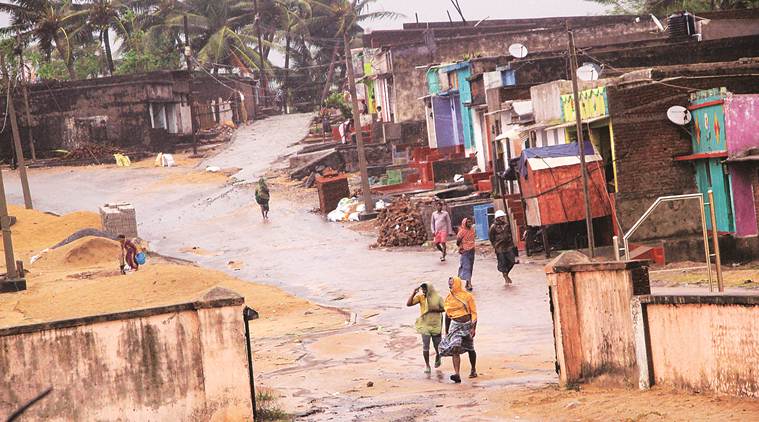 Cyclone Titli claimed 52 lives in Odisha earlier this month.
Cyclone Titli claimed 52 lives in Odisha earlier this month.
“A mountain collapsed on me last week,” says Pramila Behera, 45. Running a few feet behind her husband and five-year-old son who, like many others from the village, had taken shelter in a mountain cave as they fled Cyclone Titli, she saw the cave collapse as soon as they entered, instantly burying them.
Close to two weeks after Cyclone Titli ravaged southern Odisha and north coastal Andhra Pradesh, Baraghara village, in Gangabada panchayat in the state’s Gajapati district, remains in shock. On the night of October 10, 15 people, including three children, were buried alive in the cave as the cyclone triggered a landslide. The death toll across the state stood at 52.
In Manikapatna, a mere six kilometers down the mountain village of Baraghara, are privately owned pucca houses and community buildings, including a building of the Odisha Forestry Sector Development Project, a primary school and a church. Yet, villagers say, none from the government alerted them of the cyclone or moved them to these places from their kutcha houses that stood no chance against the cyclone.
“We didn’t know a cyclone would hit us. Nobody told us,” weeps Jagabandhu, a 64-year-old villager. “Why did no one from the district administration warn us?”
The wind that day, he says, was like a “cruel God”. “As it grew fiercer, it started tearing down houses. My wife and I used a rope to tie ourselves to a broken wall and prayed through the night,” says Jagabandhu, adding he was thankful that his son was in Bhubaneswar when the cyclone hit.
In 2013, the BJD government led by Naveen Patnaik had received praise from the United Nations and World Bank for evacuating nearly 10 lakh people just before Cyclone Phailin hit the state. This time, the state’s Special Relief Commissioner declared immediately after the cyclone had dissipated that the government had achieved “Mission Zero Casualty”. But as reports of death began coming in from the state’s southern coastal districts, with the Baraghara incident sending shockwaves, the state government came under fire from the BJP and the Congress.
While the Gajapati district administration was not available for comment, a high-ranking official from the Office of the Special Relief Commissioner, Odisha’s highest disaster management authority, conceded that the state should have prepared a vulnerability map on populated areas that are likely to experience landslides. “While there are Government of India guidelines on mapping landslides, we did not prepare such a map because Baraghara-like incidents have never happened before in the state,” he said, requesting anonymity.
According to the Home Ministry’s National Disaster Management Authority, coastal Odisha is categorised as a ‘very low hazard’ zone for landslides. But disaster management officials in Odisha say the categorisation — which is based mostly on landslides triggered by melting snow, such as in the Himalayas, or areas that traditionally receive severe rainfall, such as in the Northeast – needs to be updated considering severe rainfall and cyclones are increasingly frequent in coastal Odisha.
Dr Biswanath Das of BITS Pilani, who researches cyclones in Odisha, says that while the state government evacuates lakhs of people every time there is a cyclone, it doesn’t necessarily “identify and safeguard vulnerable populations” while doing so.
This year, the state government evacuated 3.5 lakh people before Cyclone Titli could make landfall.
In Das’s earlier research, he had pointed out that warnings about cyclones “have to go beyond attitude of scientific information dissemination to being a user-driven warning service. with social science knowledge”.
Citing an example, Dash says that when the administration sends out a warning to people in “low lying areas” to evacuate, they don’t take in consideration that “the vast majority of people in this country do not have any idea about the altitude at which they live”.
Last Wednesday, Chief Minister Patnaik visited Gangabada panchayat and announced that the state would carry an extensive vulnerability mapping exercise “in hilly and difficult regions”. He also increased the ex-gratia to those affected – from Rs 4 lakh to Rs 10 lakh.